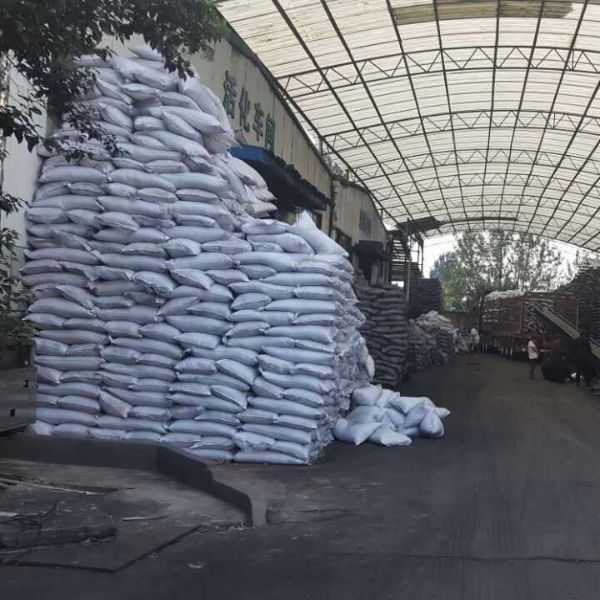1. What is Activated Carbon?
Activated carbon, commonly known as activated charcoal, is a highly porous Industrial Chemical that attracts and retains organic components. It is formed by transforming carbon to create small, low-volume pores with a higher surface area.

2. What is Activated Carbon used for?
Activated carbon is a versatile material with numerous applications.
- It is primarily utilized to remove contaminating compounds from gases and liquids, which is important in the pharmaceutical, food, and beverage industries.
- This chemical can adsorb dissolved organic contaminants and remove chemicals that affect the odor, taste, and color in halogenated hydrocarbons and other liquids, making it equally useful in wastewater treatment and liquid decolorization.
- Granular activated carbon mesh is widely used in the cyanidation process, which involves extracting gold from cyanide-containing ore.
It is effectively employed in the fields of medical and analytical chemistry.
It is also advantageous to organic farmers in terms of animal husbandry and winemaking.
3. What is the Chemical Formula of Activated Carbon?
The basic component of activated carbon is carbon, which is held together by the carbon-carbon weak Vander Waals force. As a result, the molecular formula is C.
4. Is Activated Carbon harmful to life?
Activated charcoal is safe for most adults when used for a short length of time. People eat it to get rid of poisons because activated carbon helps trap substances. However, it can have negative side effects such as constipation and dark stools. Moreover, a slowdown or blockage of the intestinal system, as well as reflux into the lungs, are more serious, but infrequent, side effects.
5. Where is Activated Carbon found? What does Activated Carbon look like?
Activated carbon is made from carbonaceous source materials such as coconuts, nutshells, coal, peat, and wood. The primary source material for activated carbon is any organic material with high carbon content.
The carbon activation technique has a significant impact on the structure of activated carbon. The product is usually odorless charcoal black and comes in a variety of mesh sizes.

Activated Carbon
6. What are the Hazardous effects of Activated Carbon?
To prevent unintended consequences, the correct storage and disposal of activated carbon must be carefully regulated. Working with this chemical needs the use of proper industrial hygiene procedures and the use of protective equipment at all times. Working in a well-ventilated area is also equally crucial.
7. What are precautionary measures necessary to be taken to handle Activated Carbon?
To prevent unintended consequences, the correct storage and disposal of activated carbon must be carefully regulated. Working with this chemical needs the use of proper industrial hygiene procedures and the use of protective equipment at all times. Working in a well-ventilated area is also equally crucial.

Precaution measures of Activated Carbon
8. What will happen if Activated Carbon is heated?
Heating activated carbon with known porosity causes gradual oxidization at around 650-700 °C. When heated above that in around 1000 °C in air, all of the carbon would burn to leave some ashes in the end.
9. Is Activated Carbon a soluble compound?
This compound is soluble in any fluid.
10. Where can I buy Activated Carbon?
If you need large quantities of this chemical, it can be shipped in 25kg net Kraft paper bags. Camachem has been shipping Activated Carbon directly to customers from all over the world.

Activated Carbon Packaging
11. How much does Activated Carbon cost?
The price of Activated Carbon is affected by various factors including the cost of raw materials used in the manufacturing process. The estimated cost per tonne is $3000.00.

Activated carbon cost
12. What is the PH of Activated Carbon?
The Ph can vary significantly depending on the chemical agent used for activation, although it is normally diluted to a pH of 7.5 or above.
13. Is Activated Carbon an electrolyte compound?
It is not an electrolytic compound since it does not decompose into its ions in solution.
14. Can Activated Carbon go down the drain?
Activated carbon, in its natural state, poses no threat to the environment because it does not bioaccumulate and has no other negative effects. However, depending on its application, it may be classified as hazardous waste, which usually requires proper disposal. It has been discovered that it can be recycled using the carbide process, or can be disposed of in a permitted landfill.
15. What is the difference between Activated Carbon and Activated Charcoal?
The majority of people are unaware of the difference between activated carbon and activated charcoal. There is no difference to be made. “Charcoal” is a common term for activated charcoal. In the manufacturing and technical sectors, the term “activated carbon” is more commonly used.

Leave a comment